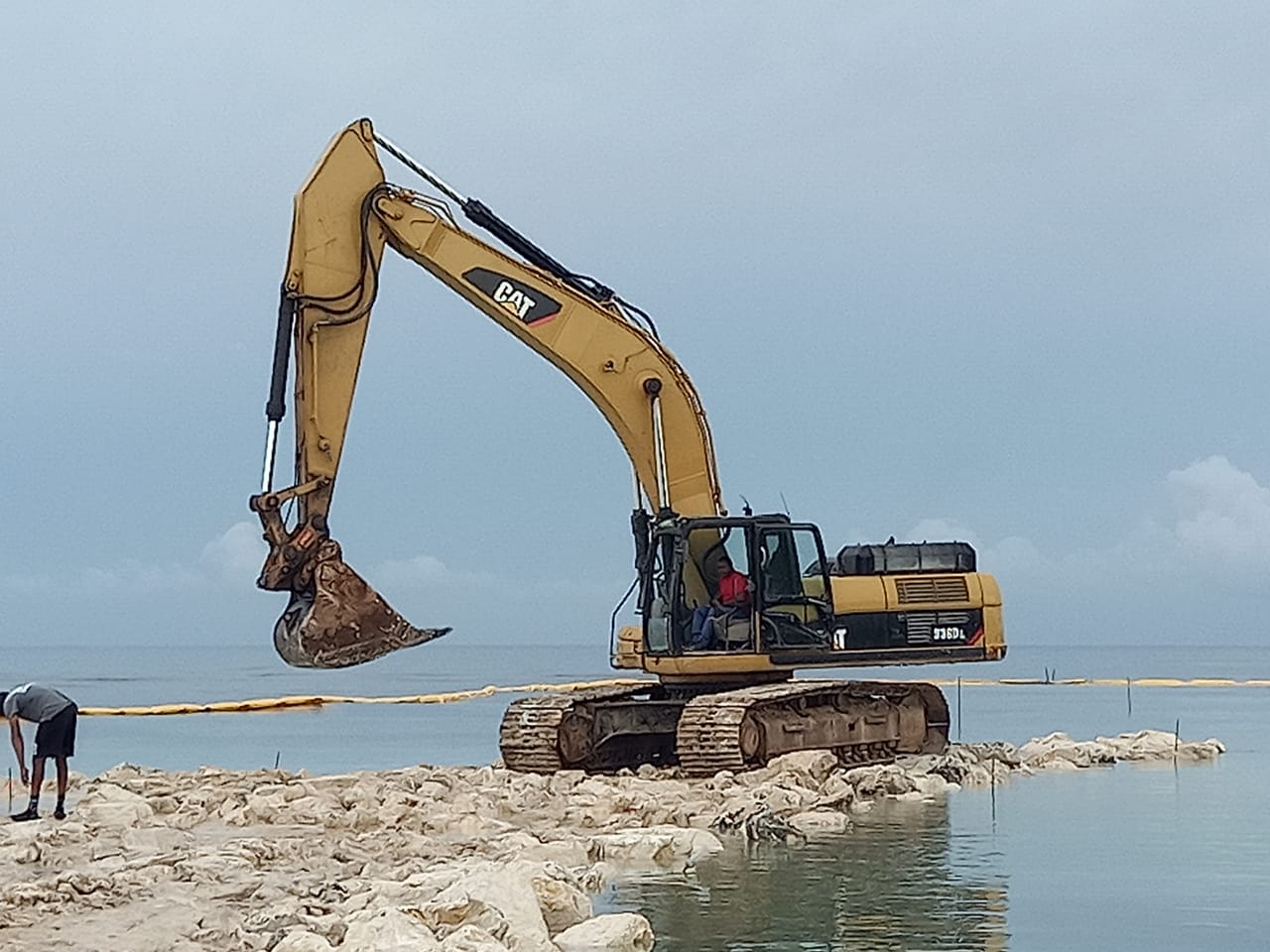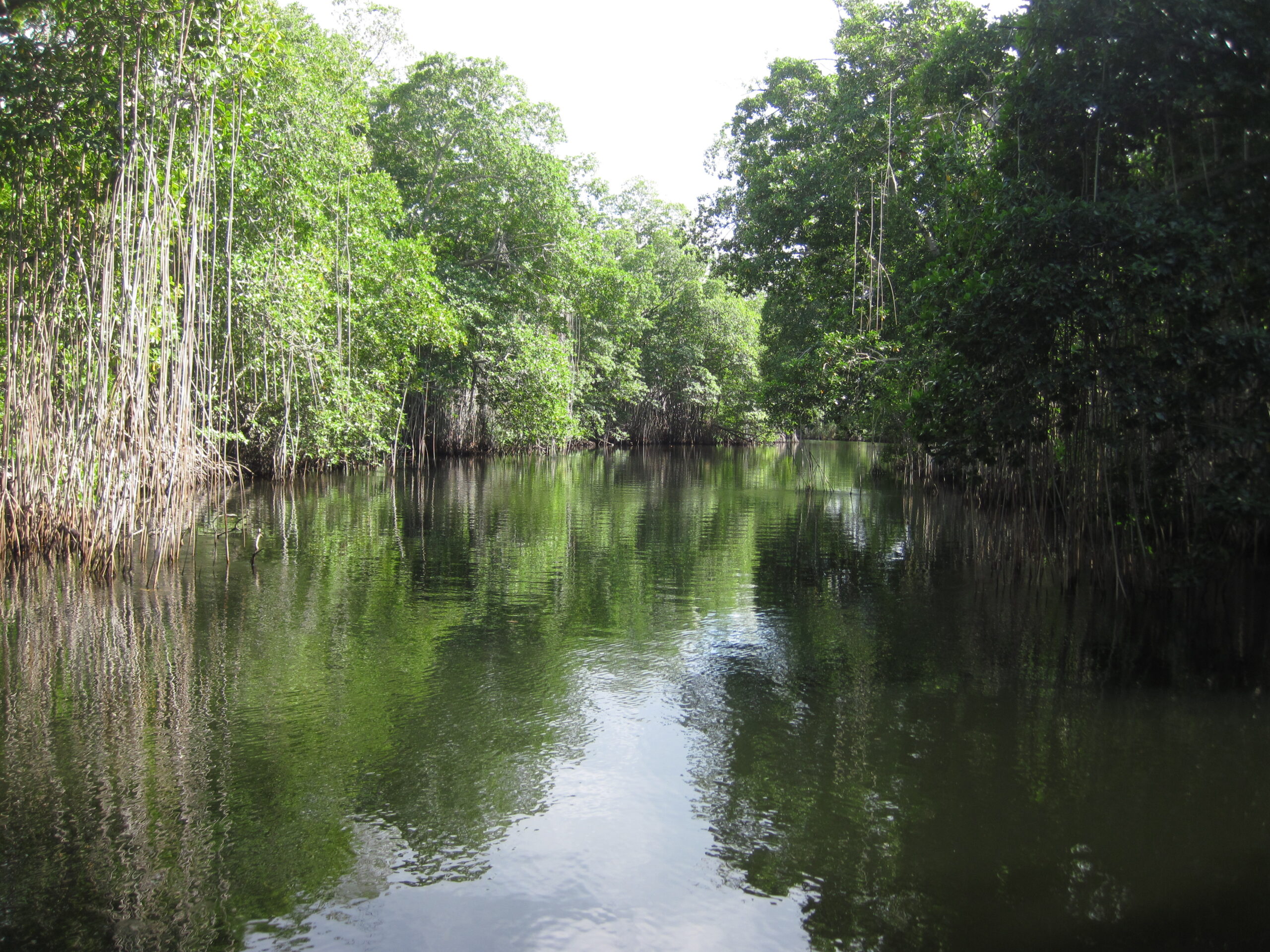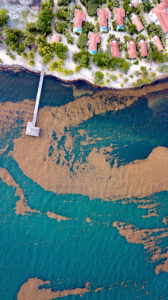 It sounds like the stuff of science fiction: a huge, brown, toxic-smelling mass invading the sea, creeping onto land, trapping marine creatures… seemingly unstoppable. Various nations send out their navies and coast guards to stem the onslaught. Fishermen try unsuccessfully to trap the invader in their nets. People flee the beaches. Economies suffer. But this is not science fiction. Much of the Caribbean and parts of the US southern Atlantic coast are witnessing the crushing storm of sargassum with no end in sight.
It sounds like the stuff of science fiction: a huge, brown, toxic-smelling mass invading the sea, creeping onto land, trapping marine creatures… seemingly unstoppable. Various nations send out their navies and coast guards to stem the onslaught. Fishermen try unsuccessfully to trap the invader in their nets. People flee the beaches. Economies suffer. But this is not science fiction. Much of the Caribbean and parts of the US southern Atlantic coast are witnessing the crushing storm of sargassum with no end in sight.
Islands of Algae
Sargassum is a brown algae that floats atop the water in what has been described as “island-like” masses. Many marine creatures use it as a nursery, and some live their entire lives within it. According to the US National Oceanic and Atmospheric Administration (NOAA), “Because of its ecological importance, in 2003 Sargassum within the US Exclusive Economic Zone off the southern Atlantic states was designated as Essential Fish Habitat, which affords these areas special protection.” Sargassum floating at sea presents less of a problem but, since at least 2017, the sheer amount of sargassum moving from its birthplace in the Sargasso Sea south and west into the Caribbean Sea and onto island shores has created more harm than good.
Environmentalists are concerned that sea turtles will have difficulty nesting onshore. Resorts, hotels, and tourism companies have seen tourists move away from areas inundated with sargassum and worry the trend will worsen.
A Long Battle
The Cancun Sun recently reported that Mexico’s Navy collected around four percent of the sargassum on the coast in 2020. In 2021, the amount dropped to three percent and as of April 2022, the Navy has been able to retrieve a mere one percent of the seaweed masses lodging themselves onshore. The Dominican Republic has proposed that Caribbean nations join together to create a fund to study and combat the influx.
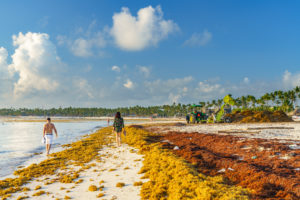 Researchers believe that climate change is partly to blame with higher sea surface temperatures fueling the seaweed’s rapid growth and frequent downpours resulting in large amounts of runoff. That increase in nutrient runoff, especially from major rivers such as the Amazon and the Mississippi, is another likely factor in the sargassum blooms. The runoff has proven to be high in phosphorus and nitrogen, the overabundance of which can overwhelm ecosystems and result in excess algae growth. Sahara dust clouds, which also carry phosphorus, nitrogen, and iron, have spread over thousands of miles of the Atlantic Ocean releasing those nutrients into the water. Finally, Chinese researchers have been studying the effect of upwelling in the wake of typhoons on algae growth in the Western North Pacific ocean. Their focus is on how nutrients in the colder, deep water make it to the surface after typhoons, and then facilitate algae growth.
Researchers believe that climate change is partly to blame with higher sea surface temperatures fueling the seaweed’s rapid growth and frequent downpours resulting in large amounts of runoff. That increase in nutrient runoff, especially from major rivers such as the Amazon and the Mississippi, is another likely factor in the sargassum blooms. The runoff has proven to be high in phosphorus and nitrogen, the overabundance of which can overwhelm ecosystems and result in excess algae growth. Sahara dust clouds, which also carry phosphorus, nitrogen, and iron, have spread over thousands of miles of the Atlantic Ocean releasing those nutrients into the water. Finally, Chinese researchers have been studying the effect of upwelling in the wake of typhoons on algae growth in the Western North Pacific ocean. Their focus is on how nutrients in the colder, deep water make it to the surface after typhoons, and then facilitate algae growth.
With no obvious leads (short of major societal behaviour changes) on how to curb the factors likely leading to this tremendous growth of sargassum coupled with resource limitations on how much can be removed, much of the focus has turned to how to use the seaweed productively. Companies like Grogenics are working to transform sargassum into organic fertiliser, which they claim also sequesters and stores carbon. Others are exploring the possibility of using sargassum as an alternative fuel source and calling it “e-coal”.
In Jamaica, Kapleton Hall, formerly with the National Environment and Planning Agency (NEPA) and currently a Regulating Master Chief with the Jamaica Defence Force Coast Guard, has been working independently on a similar project. “We have a problem,” he remembers thinking, “How can we address it? When there is a problem there is a solution, and when government comes up with a new law, there’s an opportunity.” The law he is referring to is back in 2019 when Jamaica banned the use of plastic straws; Mr. Hall thought of extracting material from the sargassum to make alternative straws. A contact in St. Lucia helped him analyse the seaweed, and what they found were the “Big 3” elements: NPK – Nitrogen, Phosphorus, and Potassium, the primary nutrients in commercial fertilisers. Mr. Hall has been working on extracting these nutrients in liquid form and creating small batches of a product to induce plant growth. “The intent,” he says, “is to make this a viable business.”
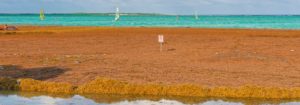
Concerns remain about the toxicity of sargassum and whether it can be used as fertiliser for animal or consumable plant products. A recent study by the World Wildlife Foundation – Mexico and the NGO STINAPA Bonaire found elevated levels of heavy metals, including arsenic, present in vegetables grown in soil to which fertiliser derived from sargassum had been added. While these are early studies and would need to be replicated, the results make it clear that continued research is required for this and other commercial uses for excess sargassum.
As masses of brown seaweed continue their advance toward and onto the white sand beaches of the Caribbean and US south Atlantic coasts, governments, academics, environmentalists, and entrepreneurs are battling both on the defensive and offensive. The only thing that’s clear is that this battle is far from over.
